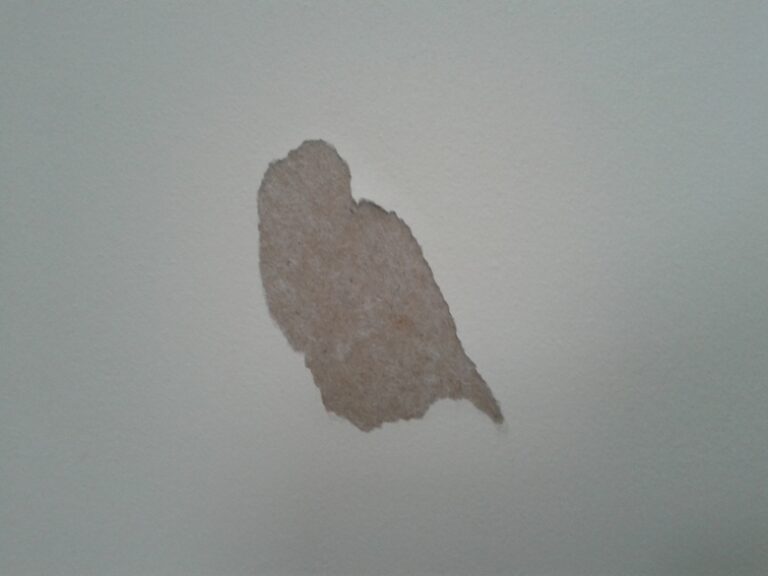Yes, you can paint over liquid rubber. There are a few things to keep in mind when doing so, however. First, you will want to make sure that the surface you are painting is clean and free of any dirt or debris.
This will help the paint to adhere better to the surface. Second, you will want to choose a paint that is compatible with the type of liquid rubber you are using. Some paints may not be able to adhere properly to certain types of rubber.
Finally, you will want to apply a primer before painting if possible. This will help the paint to last longer and prevent it from peeling off easily.
- If the liquid rubber is still wet, you can simply paint over it with regular latex paint
- If the liquid rubber has dried, you will need to sand it down before painting
- Once the surface is sanded smooth, you can then apply a primer and paint as usual
How Long Does Liquid Rubber Last
Liquid rubber is a versatile material that can be used for a variety of applications. Its durability and flexibility make it ideal for use in many industries, from construction to automotive. But how long does liquid rubber last?
Liquid rubber is made from vulcanized polymers, which give it its unique properties. These polymers are cross-linked, meaning they are chemically bonded to each other. This makes liquid rubber stronger and more durable than other materials.
The lifespan of liquid rubber depends on how it is used and what type of environment it is exposed to. In general, liquid rubber will last longer if it is not exposed to UV light or extreme temperatures. When used properly, liquid rubber can last for years without deteriorating.
Liquid Rubber Paint
If you’re looking for a paint that will provide a waterproof barrier and protect your surfaces from corrosion, then liquid rubber paint is a great option. This type of paint is made from latex or synthetic rubber, and it can be applied to metal, concrete, wood, and masonry. Liquid rubber paint is also resistant to UV rays, making it ideal for outdoor use.
Here are some tips for using liquid rubber paint:
1. Make sure the surface you’re painting is clean and dry before you start. If there’s any dirt or debris on the surface, it will prevent the paint from adhering properly.
2. Apply the paint with a brush or roller in long even strokes. It’s important to avoid creating bubbles in the paint as you apply it.
3. Once the first coat of paint has dried (which usually takes about 24 hours), apply a second coat if desired.
4. Allow the final coat of paint to cure for at least 72 hours before exposing it to water or moisture.
What Paint Will Stick to Flex Seal Liquid
If you’re looking for a paint that will stick to Flex Seal Liquid, there are a few options to choose from. You can either go with an oil-based paint or a water-based acrylic paint. Both of these types of paints will adhere well to the surface of Flex Seal Liquid.
However, oil-based paints may take longer to dry and may not be as durable as water-based acrylics.
How to Apply Liquid Rubber
If you’re in need of a waterproofing solution, look no further than liquid rubber. This product can be applied to just about any surface to create a watertight seal that will keep moisture out and prevent costly damage. Best of all, it’s easy to apply and can be done with just a few simple steps.
To get started, you’ll need to gather the following supplies: liquid rubber, a brush or roller for application, and something to mix the rubber with (if it’s not already pre-mixed). Once you have everything you need, simply follow these instructions:
1. Begin by cleaning the surface that you’ll be applying the liquid rubber to.
This is an important step because any dirt or debris on the surface could prevent the rubber from adhering properly.
2. Next, mix together your liquid rubber according to the instructions on the package. If you’re using a pre-mixed solution, simply pour it into a container that’s large enough for dipping your brush or roller into.
3. Once your mixture is ready, dip your brush or roller into it and begin applying it to the surface in even strokes. Be sure to work quickly as liquid rubber can begin drying fairly rapidly.
Liquid Rubber Waterproof Sealant
If you’re in need of a reliable waterproof sealant, look no further than liquid rubber! This product is perfect for sealing up any leaks or cracks that you may have in your home. It’s easy to apply and dries quickly, so you can rest assured knowing that your repairs will last.
Plus, it’s affordable and available at most hardware stores. So what are you waiting for? Pick up some liquid rubber today and get started on those repairs!
Can You Paint Over Flex Seal Liquid Rubber?
If you’re looking to add a new coat of paint to your home, you may be wondering if you can paint over Flex Seal liquid rubber. The answer is yes! You can definitely paint over Flex Seal liquid rubber to change the color or style of your space.
Here’s what you need to know about painting over Flex Seal liquid rubber.
Flex Seal is a type of liquid rubber that can be used on a variety of surfaces, both inside and outside the home. It’s great for sealing cracks and gaps, and it can also be used as an adhesive.
Once it dries, it forms a watertight, airtight seal that is incredibly durable.
Because Flex Seal is so versatile, it’s no surprise that you can paint over it. In fact, Flex Seal actually makes an excellent primer for painting projects.
Just make sure that the surface you’re painting is clean and dry before applying Flex Seal. Once you’ve applied the Flex Seal, you can then proceed with your chosen paint color or design.
One thing to keep in mind when painting over Flex Seal is that because it forms such a tight seal, any imperfections in your painting job will be more noticeable than they would be if you were just painting directly onto the wall or surface.
So take your time and do a good job!
Can You Paint Over Rubberized Coating?
It’s possible to paint over rubberized coating, but there are a few things you should keep in mind before doing so. First, it’s important to clean the surface of the rubberized coating thoroughly. Any dirt or debris on the surface will prevent the paint from adhering properly.
Once the surface is clean, you’ll need to roughen it up a bit with sandpaper so that the paint has something to “grab onto.”
Once you’ve prepped the surface, you can go ahead and apply your paint. It’s best to use a latex-based paint for this project, as oil-based paints may not adhere well to rubberized coatings.
You may need to apply multiple coats of paint depending on the color you’re trying to achieve and how opaque you want the final result to be.
If you take these steps, painting over rubberized coating is definitely possible! Just be patient and take your time prepping the surface beforehand – it will make all the difference in terms of how your finished project looks.
What Kind of Paint Will Stick to Rubber?
There are a few different types of paint that can stick to rubber, but the best type to use is acrylic paint. Acrylic paint is a synthetic polymer made from vinyl and acrylic monomers. It’s water-based, so it’s easy to clean up, and it dries quickly.
Plus, it has good adhesion properties, which means it will stick well to rubber surfaces.
Is Liquid Rubber Permanent?
Liquid rubber is a type of synthetic rubber that is made from a polymer and various chemicals. It is used in many applications, including adhesives, coatings, and sealants.Liquid rubber is not permanent. It will degrade over time due to exposure to sunlight, heat, and water.
Conclusion
If you’re looking to give your home a fresh coat of paint, you may be wondering if you can paint over liquid rubber. The answer is yes! Liquid rubber can be an excellent base for your new paint job, providing a smooth and even surface for the paint to adhere to.
However, there are a few things you should keep in mind before painting over liquid rubber. Make sure the surface is clean and free of any dirt or debris, as this can prevent the paint from adhering properly. You’ll also want to use a primer designed for use with latex-based paints, as this will help the paint stick to the surface better.
Once you’ve prepped the surface and chosen the right primer, simply apply your paint as usual. With a little extra prep work, painting over liquid rubber is a breeze!

